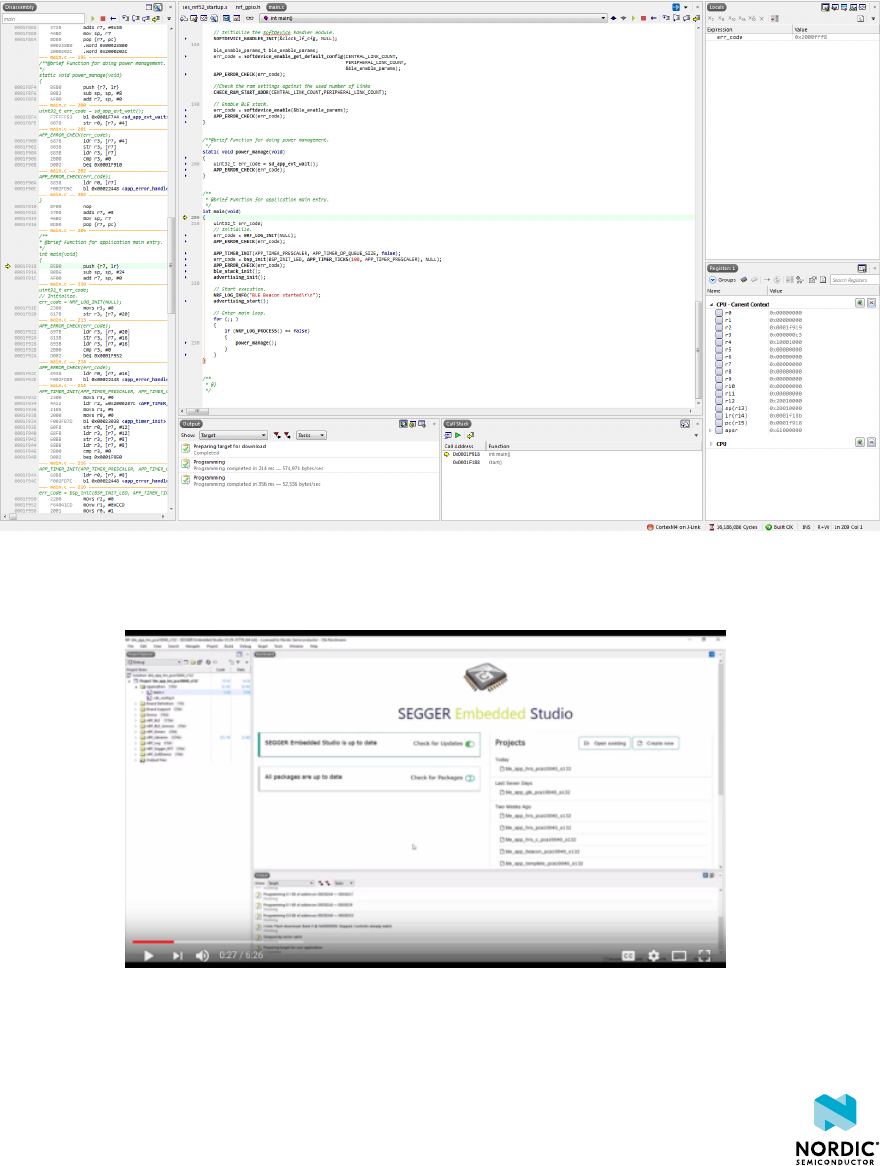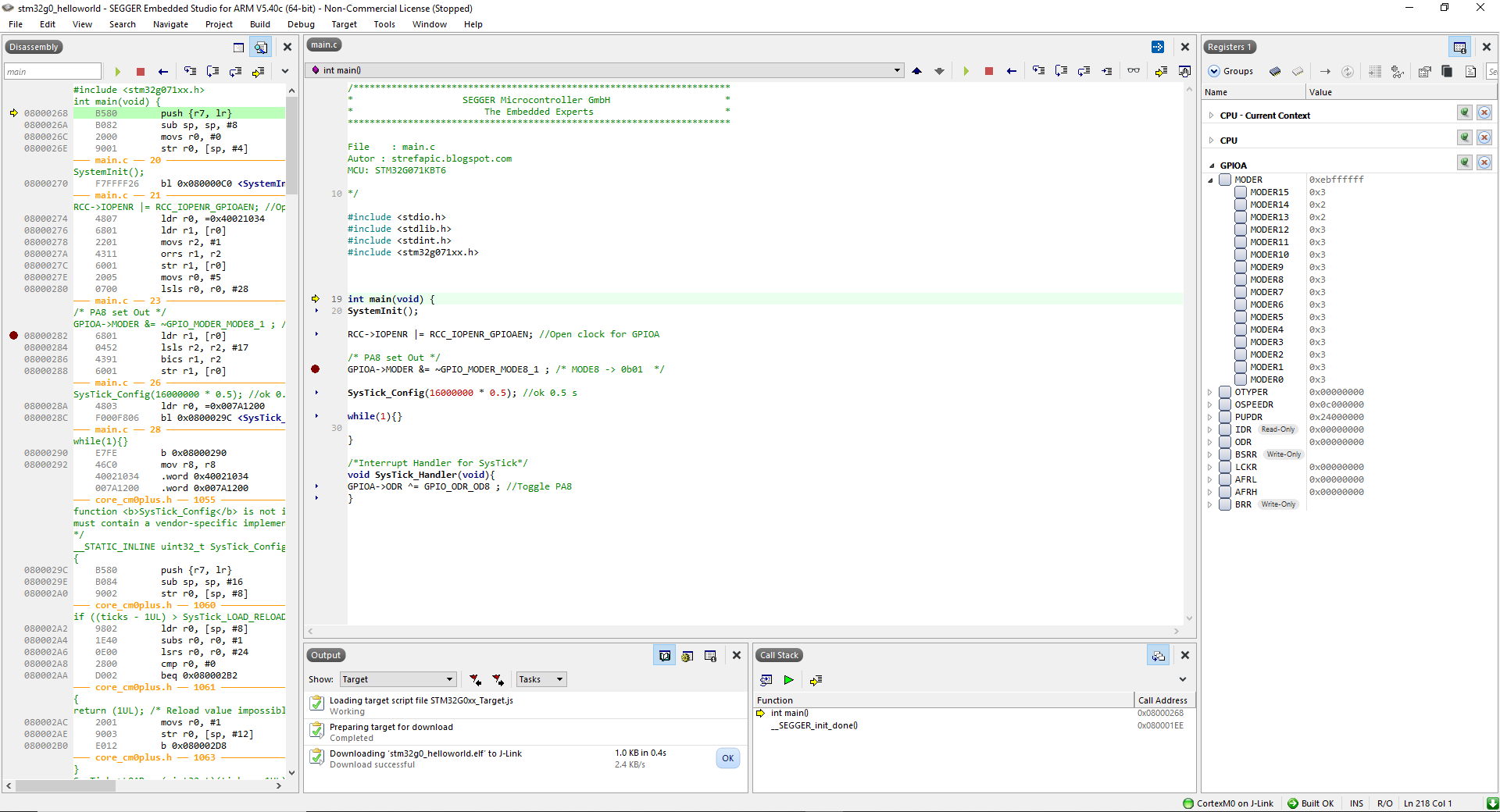
- SEGGER EMBEDDED STUDIO DEBUGGER NEVER HITS BREAKPOINT MANUAL
- SEGGER EMBEDDED STUDIO DEBUGGER NEVER HITS BREAKPOINT SOFTWARE
- SEGGER EMBEDDED STUDIO DEBUGGER NEVER HITS BREAKPOINT PC
- SEGGER EMBEDDED STUDIO DEBUGGER NEVER HITS BREAKPOINT WINDOWS
This includes anything showing a scroll bar, including this manualįor views with different scroll bars, like Trace View, holding SHIFT will switch the wheel scrolling from the timeline to the view (horizontal).įor views with a timeline, holding CTRL will change from scrolling to zooming wheel up to zoom in, wheel down to zoom out.

SEGGER EMBEDDED STUDIO DEBUGGER NEVER HITS BREAKPOINT WINDOWS
If you have multiple screens, you can create additional main windows (one for each screen) and move views in between them. This way, you can combine multiple views and arrange them any way you like. If you release the mouse button when not on a docking target, the view will become a free-floating window. Move the mouse cursor to the desired docking target and release the mouse button. When dragging the view, possible docking targets are displayed. To move a view, place the mouse cursor over the name list in the top (where the "X" close button is), hold down the left mouse button and drag the view. You can rearrange the views by docking them next to other views, or change the view to a free-floating window. You may also access the views from the Views menu, just like in older versions of Tracealyzer. You can also open the views by double-clicking on the thumbnail pictures.
SEGGER EMBEDDED STUDIO DEBUGGER NEVER HITS BREAKPOINT MANUAL
This provides a brief description of each view along with a thumbnail picture, a button to open the selected view ("Show View") and a User Manual link ("Read More"). To overview all views and features in Tracealyzer, select "All Views" as shown above. You can adjust the contents of the Navigation Bar in the Navigation Bar Settings (File menu -> Settings). The most frequently used views are found in the Navigation Bar (the left-side icons). There are several ways of accessing and arranging these views. Tracealyzer offers over 30 views, providing different perspectives of the trace data. Read more under the Creating and Loading Traces section. Tracealyzer supports several third-party solutions provided by RTOS vendors, and Percepio also provides the Percepio Trace Recorder library that supports several RTOSes and soon also bare-metal setups. In the latter case, please refer to the Running on Linux section below.Ī trace creation component. Tracealyzer v4.2.0 officially supports Microsoft Windows and Linux hosts.
SEGGER EMBEDDED STUDIO DEBUGGER NEVER HITS BREAKPOINT PC
The PC application Tracealyzer, that provide trace visualization. Percepio Tracealyzer consists of two main components: Tracealyzer does not require additional tracing hardware, which means that it can be used in deployed systems to capture rare errors which otherwise are hard to reproduce. Tracealyzer can be used side-by-side with a traditional debugger and complements the debugger view with a higher level perspective, ideal for understanding real-time issues where a classic debugger is not sufficient. This way, you can visualize specific aspects of importance for your system and the problem at hand. On top of this, Tracealyzer allows you to create user-defined visualizations using State Machines and Custom Intervals. Tracealyzer can also show interrupt handlers as well as User Events logged from your application code. The resulting visualization makes it much easier to draw conclusions from the data, understand the problem and verify the solution.įor RTOS-based systems, Tracealyzer shows task scheduling and timing, calls to RTOS services (including blocking and timeouts) and internal RTOS events such as task activations and OS ticks. This allows Tracealyzer to perform advanced analyses and provide many specialized visualizations, with intuitive links between the views and highlighting of related events.
SEGGER EMBEDDED STUDIO DEBUGGER NEVER HITS BREAKPOINT SOFTWARE
Tracealyzer provide state-of-the-art visualization developed since 2004 and actually understands the meaning of many software events from supported RTOSes and middleware stacks.

With Tracealyzer you see what is really going on in your system! This saves you many hours of frustrating trial-and-error troubleshooting. More than 30 views offers amazing insight into the real-time behavior, speeding up debugging, validation and performance optimization. Percepio Tracealyzer is a powerful tool for tracing and visualization of embedded and IoT software systems at runtime.


 0 kommentar(er)
0 kommentar(er)
